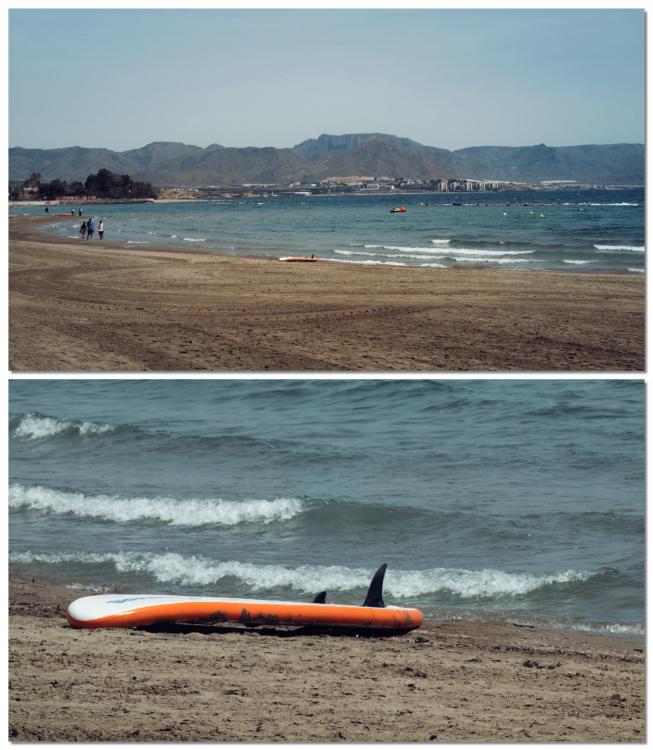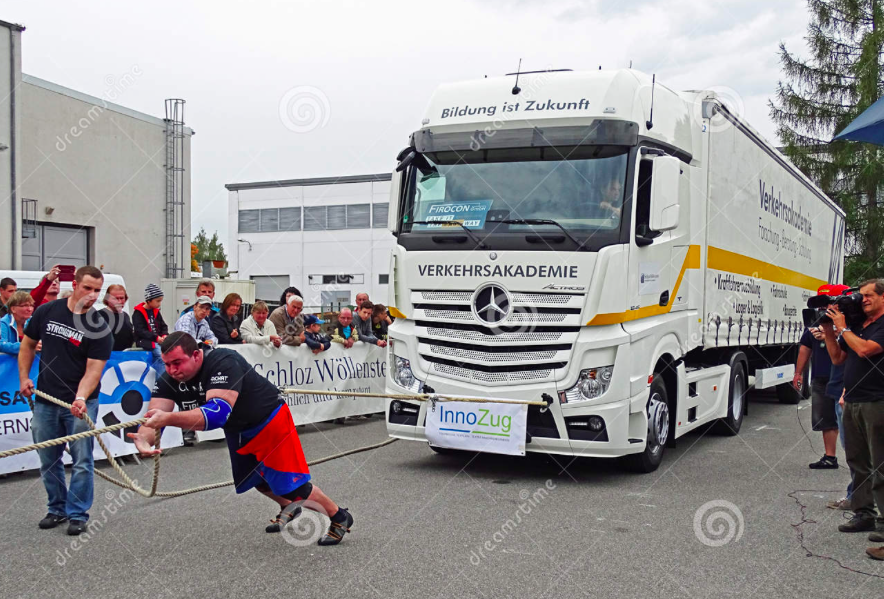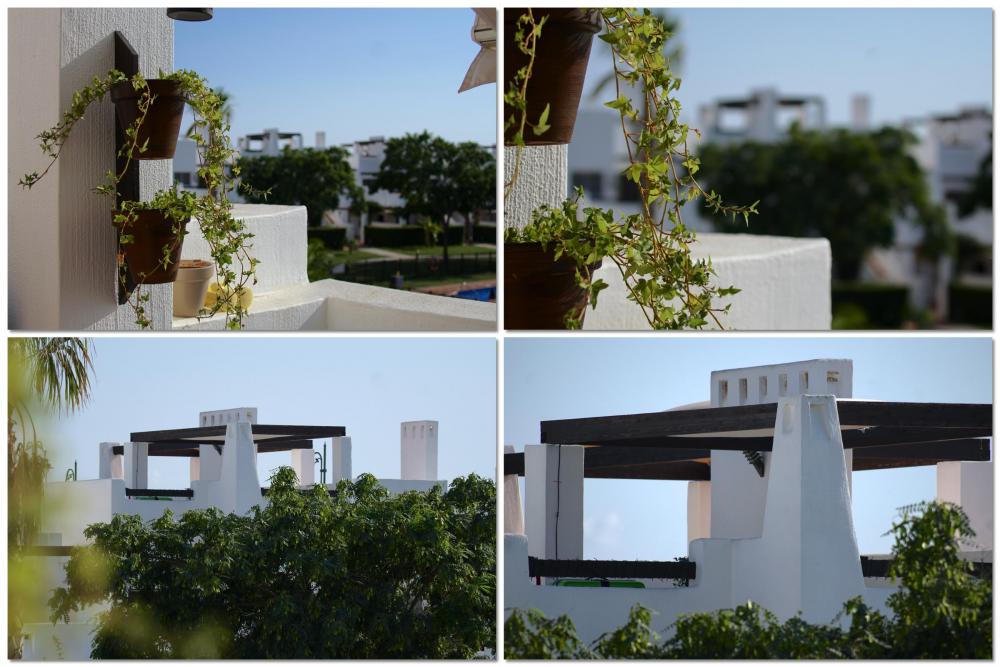All Activity
- Today
-
Decision made, I am sticking with LUMIX regardless of what Nikon or Sony do next. S1Rii inbound... Here's my reasoning and intentions for those that are interested in such things! Currently I am using: S9 + 2x S5ii for my video work, plus a Sony A7RV and a Nikon Zf for stills. That's 5 camera bodies plus 9 lenses spread over 3 systems with 3 different menus, batteries, handling/haptics etc. In summary, it works, but not without issues. I am switching to 4 camera bodies plus 7 lenses over 1 system. I have 3 principal aims: A: Reduce the amount of kit I have to work with and B: Have it all within one single cross-compatible system. C. Ability to pull 6k stills from video footage on a consistent basis. Nikon is or was an option with Z8 + 2x Z6iii + Zf and all my Tamron e:Mount lenses would work just fine, but the negatives for me are mainly; no write to second card back up, Vlog is easier/better to grade and looks better to my eye (marginal but looks that way to me) and costs a few thousand more than an all LUMIX line up. Sony has the best lens lineup options for me and I prefer the FX style bodies by a large margin, but no 6k camera (at least for now) kills it for me. Nikon may come out with this rumoured ZR for 2026 and it may answer some of my current Nikon criticisms...but it may not and if it does, c'est la vie, 'sideways' rather than anything I actually need. Ditto Sony. It's the lens lineup mainly that is the draw and if there was a 6k camera available now, I would probably have gone in that direction and in FX style bodies, it would have sealed the deal, but again, even if that comes into being by the end of this year, too late for me and I'm not a brand hopper for the sake of the latest new thing just because it's the latest new thing, ie, this current crop of ex-Sony Shillsters to now LUMIX Shillsters are all going to be hopping back in the direction of Sony within the next 6 months for sure. Nope, I can't and won't do that. If I have a Porsche, I might look at Ferrari or Aston and think, "yep, they're nice, but I already have a Porsche and it's fantastic". (I don't, - I have a used 150,000 miler Skoda Octavia Scout 😜 ) I'm 2 weddings in to a 17 wedding season and the new boy won't arrive in time for the next 2 which I leave for on Monday, but at least the 13 jobs after that will all be with the new system which will now comprise the following: S1Rii with Sigma 28-70mm f2.8 until I have sold all the stuff I need to sell and then will be picking up the Sigma 28-45mm f1.8 for indoor use and use my existing LUMIX 70-200mm f4 for outdoor use. I hate lenses that extend with zooming and neither of these do! Hybrid use, - mainly stills but I will also shoot video with this. S9 with 18/50/85mm f1.8 on freestanding monopod which is my current and going forward will now share duties with the S1Rii as my 'run & gun' units. Pair of S5ii's remain as my 2x statics with any 2 of the above 6 lenses that are not in use on the S1Rii or S9 at any given time, but at some point, I am going to add the Sigma 28-105mm f2.8 into the mix, ie, still 1 less body and 2 less lenses than I have currently been using this year and last, but the 28-105 will give me a bit more flexibility that my current L Mount lens lineup lacks. The only thing that put me off doing this sooner really was the body design... It's not that exciting and I was hoping for something more S1H or even Sony FX style but upon reflection, it's a better body than the S5ii being slightly chunkier, a MUCH better rear LCD and a few knobs and whistles that improve the overall use. Dream camera? Probably not, but a very very solid move (for me) I think. The bottom line is once you have pushed that button, how do you feel about it and will I miss the A7RV and Zf? I feel good about it actually because the positives outweigh any negatives and the Sony + Nikon pairing has been stellar, but there is simply a better (for me) option now. 7.2k 30p Open Gate Vlog here we come...
-
 MrSMW reacted to a post in a topic:
Frame Grab Software
MrSMW reacted to a post in a topic:
Frame Grab Software
-
I’ll take a look at QuickTime, - I didn’t know that.
-
It’s not overstated, they can look incredible in the right hands.
-
 FHDcrew reacted to a post in a topic:
The YouTubers are fighting!
FHDcrew reacted to a post in a topic:
The YouTubers are fighting!
-
I've seen some incredible looking C100 footage, and I think that it still can produce great images today. I bet if you upscaled it and uploaded it to YouTube most people wouldn't notice it wasn't really 4K.
- Yesterday
-
 ac6000cw reacted to a post in a topic:
Panasonic Firmware Update For S1II/S1IIE/S1RII Includes ARRI LogC3 Option
ac6000cw reacted to a post in a topic:
Panasonic Firmware Update For S1II/S1IIE/S1RII Includes ARRI LogC3 Option
-
I usually just use quicktime and use command c. Never looked into software that could do it automatically!
-
incredible seems a bit overstated. decent maybe
-
 majoraxis reacted to a post in a topic:
Panasonic Firmware Update For S1II/S1IIE/S1RII Includes ARRI LogC3 Option
majoraxis reacted to a post in a topic:
Panasonic Firmware Update For S1II/S1IIE/S1RII Includes ARRI LogC3 Option
-
 Davide DB reacted to a post in a topic:
Share our work
Davide DB reacted to a post in a topic:
Share our work
-
Speaking of IS, the entire thing culminated in me buying a 24-70 f/4L IS from somebody on ebay - since an irrelevant search result when looking for info on the 28-300 reminded me that it existed - and it's smaller and lighter than the 24-70/2.8L II and has IS. And being an f/4 lens, it's not popular and cost me less than $400 used. If I decide to bring the R5 as a second camera, I'll just put that on it and call it good. The entire combo will be smaller than some of the Fujinon lenses for GF. 😅
-
 FHDcrew reacted to a post in a topic:
The YouTubers are fighting!
FHDcrew reacted to a post in a topic:
The YouTubers are fighting!
-
 eatstoomuchjam reacted to a post in a topic:
Lenses
eatstoomuchjam reacted to a post in a topic:
Lenses
-
Recently I showed something I did some years ago, shot on HDV with a Canon HV20. Some people were impressed that way back then I had such good equipment then shocked when I told them it was on a consumer HDV camera. (I did have a wide angle attachment and shot it in a log type mode then colour corrected it.) Cameras have been more than good enough for a long time.
-
It also benefits from having IS.
-
 John Matthews reacted to a post in a topic:
The YouTubers are fighting!
John Matthews reacted to a post in a topic:
The YouTubers are fighting!
-
It has been on my "someday maybe I'll buy that lens" list for about 20 years now. Every year, the price comes down a bit more. Prices in the US are now about $500-600 and ebay prices from Japan are about $450. What's the inflection point where it goes from "maybe someday" to "buy?" Only time will tell. It was also superseded by a 28-300/3.5-5.6L which is a more useful range. Still a push-pull zoom along with the rude comments from friends that comes with that when using it. Used prices in the US are still high - $800+. Although... there is one on ebay for $400 which intermittently throws a communication error connected to the camera. Kind of tempted to take a flyer on that one and do the rubber eraser trick on the contacts - and if that doesn't work, disassemble the rear of the lens to see if it's a solvable problem... Exactly. It's important, when traveling, not to be too focused on a single specific outcome. In the end, it's about the adventure and the time spent together (the woman I'm dating lives in Brasil so we need to treasure our shared time, at least I can spend a few months there yearly because my job tolerates me working from there for a while). Renting a truck with a camper on it, there's always a danger that it breaks down and we miss some stuff due to lost time waiting for repair/replacement. By going with a vague itinerary, it's easier to focus on what we're actually doing vs fretting about things that will be missed (and if they are missed, just about all of them are guaranteed to be there if I ever choose to go back again). It's a strange world. 😅 Both of our countries feature landscapes from harsh desert to tropical jungle. Yours has a lot more aggressively dangerous flora/fauna, though. In mine, the danger is mostly from the residents of rural areas. In both places, there are spots to stand, breathe, and feel in awe of the amazing landscape sprawled out before you. (Even here in Minnesota, we have some places like that despite that it's objectively one of the most boring/flat states in the country)
-
 eatstoomuchjam reacted to a post in a topic:
Lenses
eatstoomuchjam reacted to a post in a topic:
Lenses
-
 eatstoomuchjam reacted to a post in a topic:
Lenses
eatstoomuchjam reacted to a post in a topic:
Lenses
-
Just to be clear, I can already do this manually and incredibly tediously in my current editing software *cough* Premiere, but I am looking for something AI so I can skip losing a day of my life with each job. Cheers.
-
Anyone used anything like this with any success? Ie, take say a 10-12 minute finished video of 300+ clips and have the software frame grab 'the best' from each cut? I've had a go with BestFrame from FX Factory but it's crashed 4 times in a row now 🤪
-
Another range example I did with it here, this time on a GX80. Its a very powerful combo but, despite the 35-350 being compact for what it is, when it is mounted on the GX80 it is all a little bit ...
-
I have this lens and this is a simple range example from one spot that I did with it for someone on here many moons ago. It is actually more like a 70-200 f2.8 size wise for carrying but that is down to it being a push pull design which isn’t exactly great for smooth continuous zoom shots. But is ideal for practising the trombone.
-
OK, I have taken a look at the Arri option and not interested. In side by side comparisons with Vlog, sometimes I preferred one and sometimes the other, but Vlog more times than the Arri. And because I don’t need to match an actual Arri camera, zero need. And definitely not paying for it! More interested in the firmware update… So the S1Rii can now shoot open gate 8k, but it’s limited to 24p, ie, no PAL region 25p? That’s fucking weird! But that aside, I am considering my next move… I am looking for: 6k 50/60p, full frame, for screen grabs. S1Rii offers 5.9k 16:9 S1ii offers 5.1k 3:2 For vertical cropping purposes, there’s nothing in that really because although the S1Rii 16:9 is ‘less tall’, it’s got a bit of extra resolution/detail that makes up for supposedly more latitude 3:2 open gate? Anyway, I think that is a real world draw. General consensus seems to be that the S1Rii has a slightly better image and slightly better low light, so all factors considered for my needs, that’s an S1Rii win. Sony do not appear to have anything sub FX6 that can compete here? But correct me if I am wrong… Nikon has entered the chat… The Z8 then, it seems to be all or nothing to me from the specs as in yep, you can have 8k 60p, but it’s raw only, ie, mahoosive file sizes. Is there not an Nlog option for this? From the spec sheet, it appears 4k is the limit for 50/60p if I didn’t want to shoot raw? Or have I got that wrong also? Only interested in Lumix, Sony or Nikon for all kinds of reasons so if you even mention Canon or Black Magic, I will ghost you.
-
I deliver in 4K too. Just upscale your 1080p project to 4K on export - no-one can tell the difference! Wow - 35-350mm.... now THAT is a lens! That's definitely a lot, and I can understand why you'd feel a bit entitled too, after paying so much. If you're likely to see some animals while you're travelling around seeing other sites then that's probably the best way, as the animals you do see will seem like good fortune rather than focusing on the animals you paid to see and didn't. Those other places seem really cool too. Africa seems like a strange continent in many ways. Of course, in lots of those ways it's quite like the remote places here in Australia, but although I've seen quite a number of them they still seem strange.
- Last week
-

Zeiss ZX1 full frame Android prototype, let's repair
MrSMW replied to Andrew Reid's topic in Cameras
MPB 😂 -

Zeiss ZX1 full frame Android prototype, let's repair
Andrew Reid replied to Andrew Reid's topic in Cameras
I got it from the resident Berlin Leica Thief. -
Zeiss ZX1 full frame Android prototype, let's repair
PannySVHS replied to Andrew Reid's topic in Cameras
Hot stuff. Where did you acquire this novelty camera? That must be the youtube camera video of the year! Only thrills, no shills, a perfect watch with chips, soda and chills! @Andrew Reid -
Youtubers are snoring! Better quit watching, cuz it's so boring!
-
For what it's worth, so far, I have to say that my experience has been very positive. I've bought lenses and cameras without hiccups. I've sold about 5000 euros of gear to them and most of the time they upped my initial quote. A key part of that process is they don't report the amounts they pay me to the French government either as it must be some loophole, unlike when you sell on leboncoin.fr. The process is a little slow, but I don't have the same headaches about wondering if I'm going to get paid or scammed. If they don't accept my condition for an item, they just send it back to me. I'm happy.
-

Zeiss ZX1 full frame Android prototype, let's repair
Andrew Reid replied to Andrew Reid's topic in Cameras
The book is highly recommended 🙂 Or as they call them in the Netherlands... Booooooooooooooooooooooooooooek -

Zeiss ZX1 full frame Android prototype, let's repair
Andrew Reid replied to Andrew Reid's topic in Cameras
Does Android 6 have Camera API 2.0? I'll try it out -

Zeiss ZX1 full frame Android prototype, let's repair
MrSMW replied to Andrew Reid's topic in Cameras
Is that you Mr Bond? -

Zeiss ZX1 full frame Android prototype, let's repair
MrSMW replied to Andrew Reid's topic in Cameras
Ah, the old 'Irish Screwdriver' technique. Always works. Except when it doesn't. I liked the concept of this camera, but never dared...







